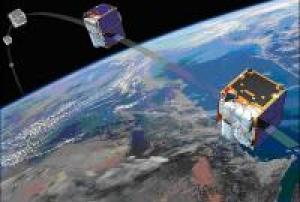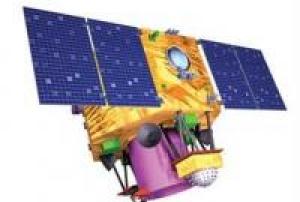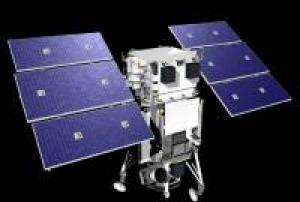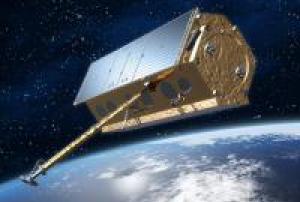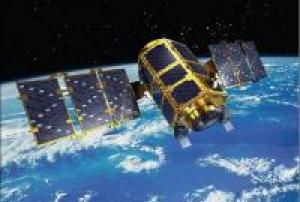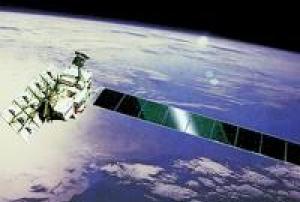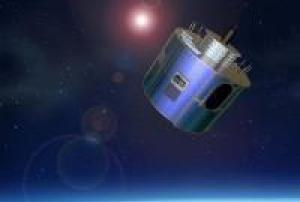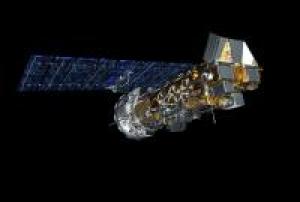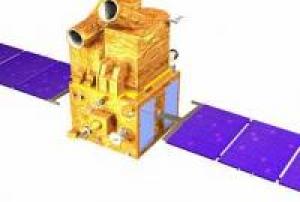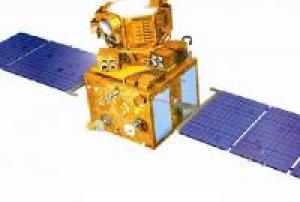Glacial Lake Outburst
Definition
Facts and figures
Further information
UN-SPIDER Regional Support Offices with hazard-specific expertise
Related content on the Knowledge Portal
RapidEye is a full end-to-end commercial Earth Observation system comprising a constellation of five minisatellites, a dedicated SCC (Spacecraft Control Center), a data downlink ground station service, and a full ground segment designed to plan, acquire and process up to 5 million km2 of imagery every day to generate unique land information products.
read more
The system is owned and operated by BlackBridge. MDA (MacDonald, Dettwiler and Associates Ltd) was the mission prime contractor and was responsible for the delivery of the space and ground segments, launch of the constellation, and on-orbit commissioning and camera calibration. The two major subcontractors to MDA were SSTL (Surrey Satellite Technology Ltd.) for the spacecraft bus, SCC and spacecraft AIT (Assembly, Integration and Test) services, as well as Jena Optronik GmbH (JOP) who provided the 5-band multispectral imager (RGB, red edge, and near IR bands).
The RapidEye constellation represents a major milestone…29/08/2008Cartosat-2 is an advanced remote sensing satellite with a single panchromatic camera (PAN) capable of providing scene-specific spot imageries for cartographic applications. The camera is designed to provide imageries with better than one meter spatial resolution and a swath of 10 km. The satellite will have high agility with capability to steer along and across the track up to + 45 degrees. It will be placed in a sun-synchronous polar orbit at an altitude of 630 km. It will have a revisit period of four days. The re-visit can be improved to one day with suitable orbit manoeuvres.
Several new technologies like two mirror on axis single camera, Carbon Fabric Reinforced Plastic based electro optic structure, lightweight, large size mirrors, JPEG like data compression, advanced solid state recorder, high-torque reaction wheels and high performance star sensors are being employed in Cartosat-2.
Instrument: PAN (…
read more28/04/2008The WorldView-1 offers a high-capacity, panchromatic imaging system which features 0.46m resolution imagery.
Operating at an altitude of 496 kilometers, WorldView-1 satellite has an average revisit time of 1.7 days and is capable of collecting up to 750,000 square kilometers (290,000 square miles) per day of half-meter imagery. The satellite is also equipped with state-of-the-art geo-location capabilities and exhibits stunning agility with rapid targeting and efficient in-track stereo collection.
WorldView-1 satellite sensor was successfully launched from Vandenberg Air Force Base, California, U.S.A., at 11:35 Hrs Pacific Daylight Time (PDT) on September 18th, 2007.
Instrument: WV60 (WorldView-60 camera)
read more
- spectral range 0.45 - 0.90 µm
- swath width: 17.6km at nadir
- pushbroom imager18/09/2007TerraSAR-X is a German Earth-observation satellite. Its primary payload is an X-band radar sensor with a range of different modes of operation, allowing it to record images with different swath widths, resolutions and polarisations. TerraSAR-X thus offers space-based observation capabilities that were previously unavailable. The objective of the mission is to provide value-added SAR (Synthetic Aperture Radar) data in the X-band, for research and development purposes as well as scientific and commercial applications.
The successful launch of TerraSAR-X on 15 June 2007 at 08:14 local time from the Russian Baikonur Cosmodrome in Kazakhstan marked the start of a campaign to map the Earth at an unprecedented level of accuracy. The aim is to create new, high-quality radar images of the Earth’s surface.Instrument: SAR (Synthetic Aperture Radar)
read more
- the sensor operates in the X-band and in 3 different modes (Spotlight, Stripmap, ScanSAR)15/06/2007KOMPSAT-2 (Korea Multi-Purpose Satellite-2), also referred to as Arirang-2 by South Korea, has been developed by KARI (Korea Aerospace Research Institute) to continue the observation program of the KOMPSAT-1 mission.
The main mission objectives of the KOMPSAT-2 system are to provide a surveillance of large scale disasters and its countermeasure, acquisition of independent high resolution images for GIS (Geographic Information Systems), composition of printed maps and digitized maps for domestic and overseas territories, balanced development of Korean territories, survey of natural resources, and continuation of satellite earth observation after KOMPSAT-1.
Instrument: MSC (Multispectral Camera)
- resolution: 1m panchromatic, 4m multispectral
- swath width: approx. 15km
read more28/07/2006ALOS (Advanced Land Observation Satellite) has been decommissioned. ALOS was successfully launched on January 24, 2006 from the Tanegashima Space Center.
ALOS was one of the world's largest earth observation satellites whose function is to collect global and high resolution land observation data. ALOS data was made available at conditions similar to those of ERS and Envisat missions, namely for scientific 'Category-1' use as well as commercial applications.
The ALOS (renamed "Daichi") satellite sensor had three remote-sensing instruments: the Panchromatic Remote-sensing Instrument for Stereo Mapping (PRISM) and for digital elevation models (DEMs). The Advanced Visible and Near Infrared Radiometer type 2 (AVNIR-2) for precise land coverage observation, and the Phased Array type L-band Synthetic Aperture Radar (PALSAR) for day-and-night and all-weather land observation and enabled precise land…
read more24/01/2006Today, weather satellites scan the whole Earth, meaning not a single tropical storm or severe weather system goes undetected. The early detection and warnings they provide have saved thousands of lives.
Meteosat data is of unique value to nowcasting of high impact weather in support of safety of life and property.
It has been shown to improve weather forecasts and severe weather warnings which, in turn helps limit damage to property and benefits industry e.g. transport, agriculture and energy.
Meteosat-9 provides a backup service to Meteosat-11 Full Earth scanning and a gap filling service to Meteosat-10 Rapid Scanning.Instruments:
read more
GERB (Geostationary Earth Radiation Budget)
MSG Comms (Communications Package for MSG)
SEVIRI (Spinning Enhanced Visible and Infra-Red Imager)
22/12/2005NOAA-18, known before launch as NOAA-N, is a weather forecasting satellite run by NOAA. NOAA-N (18) was launched on May 20, 2005, into a sun-synchronous orbit at an altitude of 854 km above the Earth, with an orbital period of 102 minutes. It hosts the AMSU-A, MHS, AVHRR, Space Environment Monitor SEM/2 instrument and High Resolution Infrared Radiation Sounder (HIRS) instruments, as well as the SBUV/2 ozone-monitoring instrument. It is the first NOAA POES satellite to use MHS in place of AMSU-B.
APT transmission frequency is 137.9125 MHz (NOAA-18 changed frequencies with NOAA-19 on June 23, 2009).
Instruments:
read more
AMSU-A (Advanced Microwave Sounding Unit - A)
AVHRR/3 (Advanced Very High Resolution Radiometer /…20/05/2005Cartosat-1 satellite sensor was built by ISRO (Indian Space Research Organization) which is mainly intended for cartographic applications was launched by the PSLV on May 5, 2005 at Sriharikota, India.
Prior to launch, ISRO renamed the IRS-P5 spacecraft to CartoSat-1, to describe more aptly the application spectrum of its observation data. In this mission, the high resolution of the data (2.5 m GSD) is being traded at the expense of multispectral capability and smaller area coverage, with a swath width of 30 km. The data products are intended to be used in DTM (Digital Terrain Model)/DEM (Digital Elevation Model) generation in such applications as cadastral mapping and updating, land use as well as other GIS applications.Instrument: PAN (Panchromatic Camera)
read more
- high resolution optical imager
- max swath: 30km05/05/2005IRS-P6 is an Earth observation mission within the IRS (Indian Remote-Sensing Satellite) series of ISRO (Indian Space Research Organization), Bangalore, India. The overall objectives of the IRS-P6 mission (ResourceSat-1) are to provide continued remote sensing data services on an operational basis for integrated land and water resources management. IRS-P6 is the continuation of the IRS-1C/1D missions with considerably enhanced capabilities.
Prior to launch, ISRO renamed the IRS-P6 spacecraft to ResourceSat-1, to describe more aptly the application spectrum of its observation data.
Instruments:
read more
LISS-4 (Linear Imaging Self-Scanning Sensor-4)
LISS-3 (Linear Imaging Self-Scanning Sensor-3)
AWiFS (Advanced Wide Field Sensor)17/10/2003

